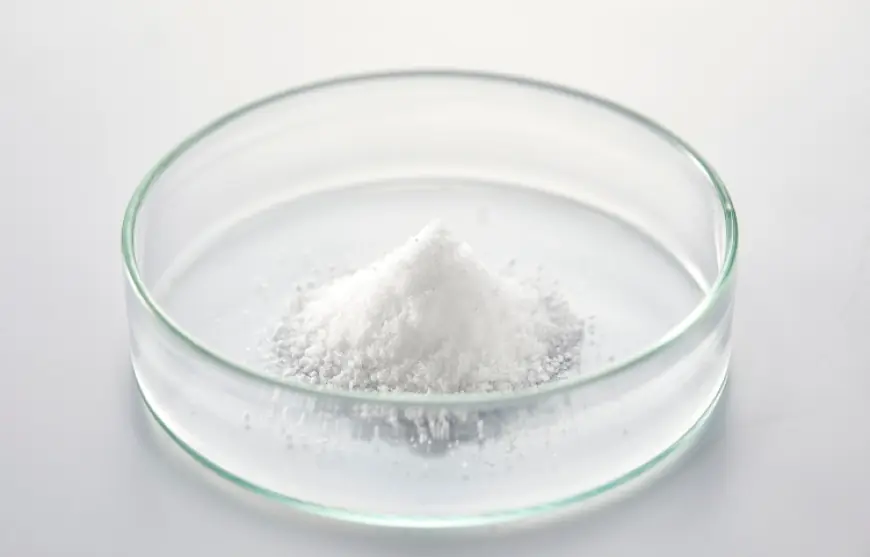Inside the Alumina Trihydrate Market: Flame-Retardant Power and More
The Alumina Trihydrate Market is gaining momentum as industries shift toward safer, eco-friendly materials. Backed by strong alumina trihydrate industry insights, this market reflects growing demand for halogen-free flame retardants and multifunctional fillers across sectors like automotive, construction, and electronics.

Quick Glance: What Makes Alumina Trihydrate Special?
-
Acts as a fire shield in plastics, wires, and construction materials
-
Serves as a whitening agent in paper, ceramics, and paints
-
Environmentally safer alternative to halogen-based flame retardants
-
Crucial for industries demanding purity, stability, and thermal resistance
The Unsung Hero of Modern Industry
You may not see it, smell it, or even hear about it often, but Alumina Trihydrate (ATH) is everywhere—quietly doing its job in the background. It’s the invisible protector in your wall insulation, the silent enhancer in your glossy paper, and the hidden warrior in your electronic casings. The Alumina Trihydrate Market is not just about commerce—it's about utility, safety, and innovation packed into a fine white powder.
This compound, chemically known as Al(OH)₃, may look plain, but it's anything but ordinary. Its multifunctionality spans across flame retardancy, filler use, and even as a source material in aluminum production. It’s a smart solution in an age where industries seek more than just performance—they demand sustainability and safety too.
Expert Market Research Says...
According to Expert Market Research, the Alumina Trihydrate Market is being increasingly shaped by consumer and industrial demand for safer, more sustainable materials. Their alumina trihydrate industry insights highlight the growing preference for halogen-free flame retardants, particularly in Europe and North America, as a major trend. Coupled with regulatory pressures and shifting environmental policies, ATH’s role is becoming more central across sectors like automotive, electronics, and building materials.
This insight emphasizes one thing: ATH isn't just a filler—it’s the future of material safety.
Fire Doesn’t Stand a Chance: ATH to the Rescue
Let’s talk about one of Alumina Trihydrate’s most powerful qualities—flame retardancy. When materials infused with ATH are exposed to high heat, the compound decomposes and releases water vapor. This endothermic reaction not only cools the surface but also forms a protective char layer that prevents the fire from spreading.
It’s why electrical insulation, wire coatings, and building panels are turning to ATH as a non-toxic, halogen-free flame suppressant. It’s fire protection without the environmental backlash—no toxic fumes, no persistent chemicals.
Beyond Safety: It’s Also a Beauty Enhancer
Yes, you read that right. ATH is a functional filler in cosmetics, paper coatings, ceramics, and even toothpaste. In ceramics and paints, it brings whiteness, opacity, and smooth application. In the paper industry, ATH improves printability while providing a brilliant white finish that speaks of purity and professionalism.
What’s more, it doesn’t just add looks—it adds durability and structure, improving a product’s lifecycle without inflating costs. That's why manufacturers across the globe consider ATH not just a filler, but a value-additive ingredient.
Clean, Green, and Industrially Supreme
In a world obsessed with cutting down carbon footprints, Alumina Trihydrate offers a greener alternative. Unlike synthetic polymers or toxic additives, ATH naturally occurs in bauxite ore. Its extraction and use leave a lighter impact on the environment—no toxic residues, no alarming emissions. It’s the eco-champion your industrial process deserves.
Why You’re Surrounded by ATH and Didn’t Even Know It
Walk into your kitchen. The countertops, the floor tiles, the electric outlets—chances are, ATH is part of their DNA. It's used in solid surface countertops for its smooth, non-porous properties. It’s embedded in PVC flooring for fire resistance. It’s even in your laptop's casing, reducing the risk of flame damage in case of internal heating issues.
What makes ATH so omnipresent is its ability to perform multiple roles—flame barrier, filler, opacifier, and stabilizer—all in one. It’s cost-effective, safe, and versatile—traits that make it a universal favorite across design, utility, and production.
ATH in the Future: Smarter Applications Await
The Alumina Trihydrate Market is poised to evolve far beyond its current applications. With the rise of electric vehicles, green construction, and advanced polymer research, ATH is finding new life in lithium-ion battery insulation, sustainable composites, and next-gen paints and coatings.
Research labs are even exploring nano-ATH variations, which promise higher dispersion rates and even better material performance. This could revolutionize everything from fire-resistant fabrics to lightweight aerospace materials, unlocking an entirely new layer of innovation.
Final Thoughts: From Filler to Frontline Warrior
Alumina Trihydrate is proof that not all heroes wear capes—or even take center stage. Its impact lies in its ability to protect, enhance, and sustain without drawing attention to itself. In a marketplace teeming with chemical alternatives and synthetic solutions, ATH stands out as a natural, adaptable, and high-performing option.
So, the next time you enjoy a high-gloss magazine, step on a fire-resistant tile, or plug in your charger, remember—ATH was there, making it better.
What's Your Reaction?
 Like
0
Like
0
 Dislike
0
Dislike
0
 Love
0
Love
0
 Funny
0
Funny
0
 Angry
0
Angry
0
 Sad
0
Sad
0
 Wow
0
Wow
0

















































